Clinical Human Anatomy: Cerebral Cortex, Spinal Cord, and Thalamus
1/39
There's no tags or description
Looks like no tags are added yet.
Name | Mastery | Learn | Test | Matching | Spaced |
|---|
No study sessions yet.
40 Terms
What is the thickness of the cerebral cortex?
2-4 mm thick
What percentage of the brain's total volume does the cerebral cortex comprise?
Nearly half
What are the two main divisions of the cerebral cortex?
Neocortex (isocortex) and Allocortex
What is the primary characteristic of the neocortex?
It has 6 layers and makes up about 95% of the cortex.
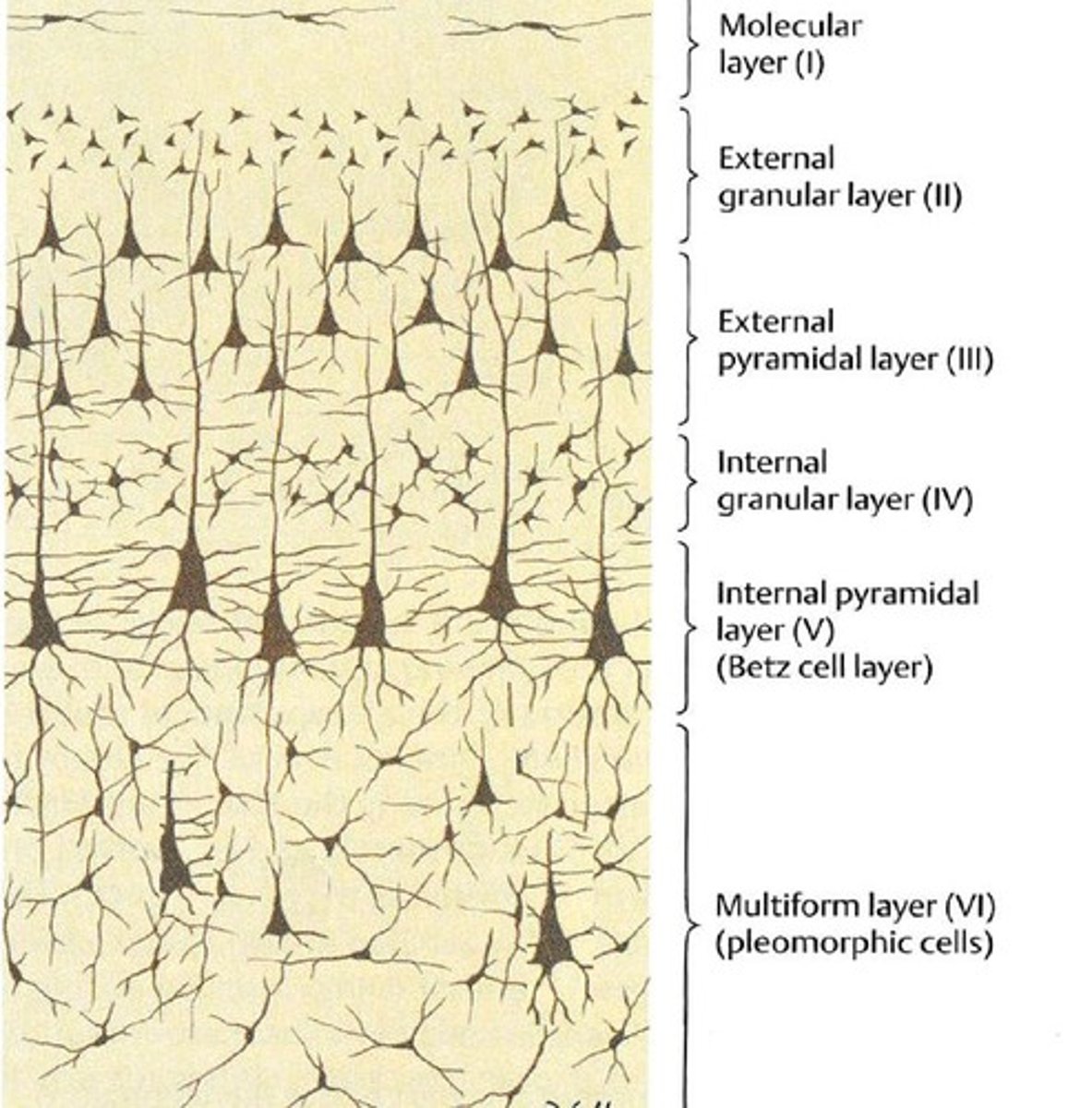
What are the two types of allocortex?
Paleocortex (e.g., olfactory cortex) and Archicortex (e.g., hippocampus)
What are the main cell types found in the neocortex?
Neurons (pyramidal and stellate cells) and glia (oligodendrocytes, astrocytes, microglia)
What is the function of the molecular layer (Layer I) in the cerebral cortex?
It is a superficial layer rich in horizontally oriented dendrites and axons.
What type of neurons are primarily found in Layer IV of the cerebral cortex?
Mainly stellate neurons and few pyramidal neurons
What is the role of Layer V in the cerebral cortex?
Contains large pyramidal neurons that project to subcortical structures and spinal cord.
What are association fibers in the cerebral cortex?
Axons that connect portions of cortex within the same hemisphere.
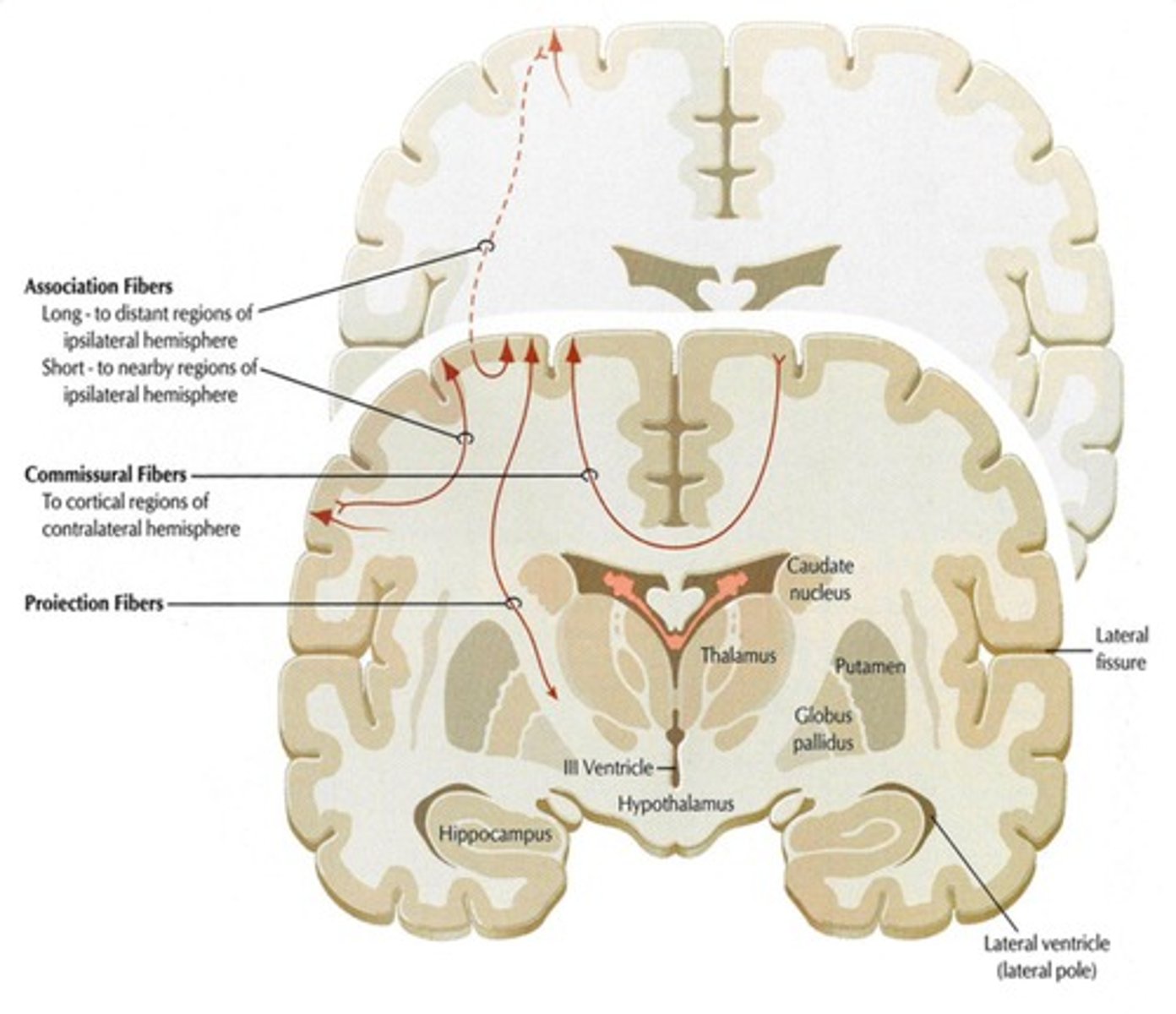
What is the primary commissural fiber in the brain?
The corpus callosum
What are projection fibers in the cerebral cortex?
Axons that project downward to deep parts of the cerebrum, brainstem, or spinal cord.
What is the location of the spinal cord?
In the vertebral canal between foramen magnum and L1-L2.
What are the three layers of the meninges?
Dura mater, Arachnoid mater, Pia mater
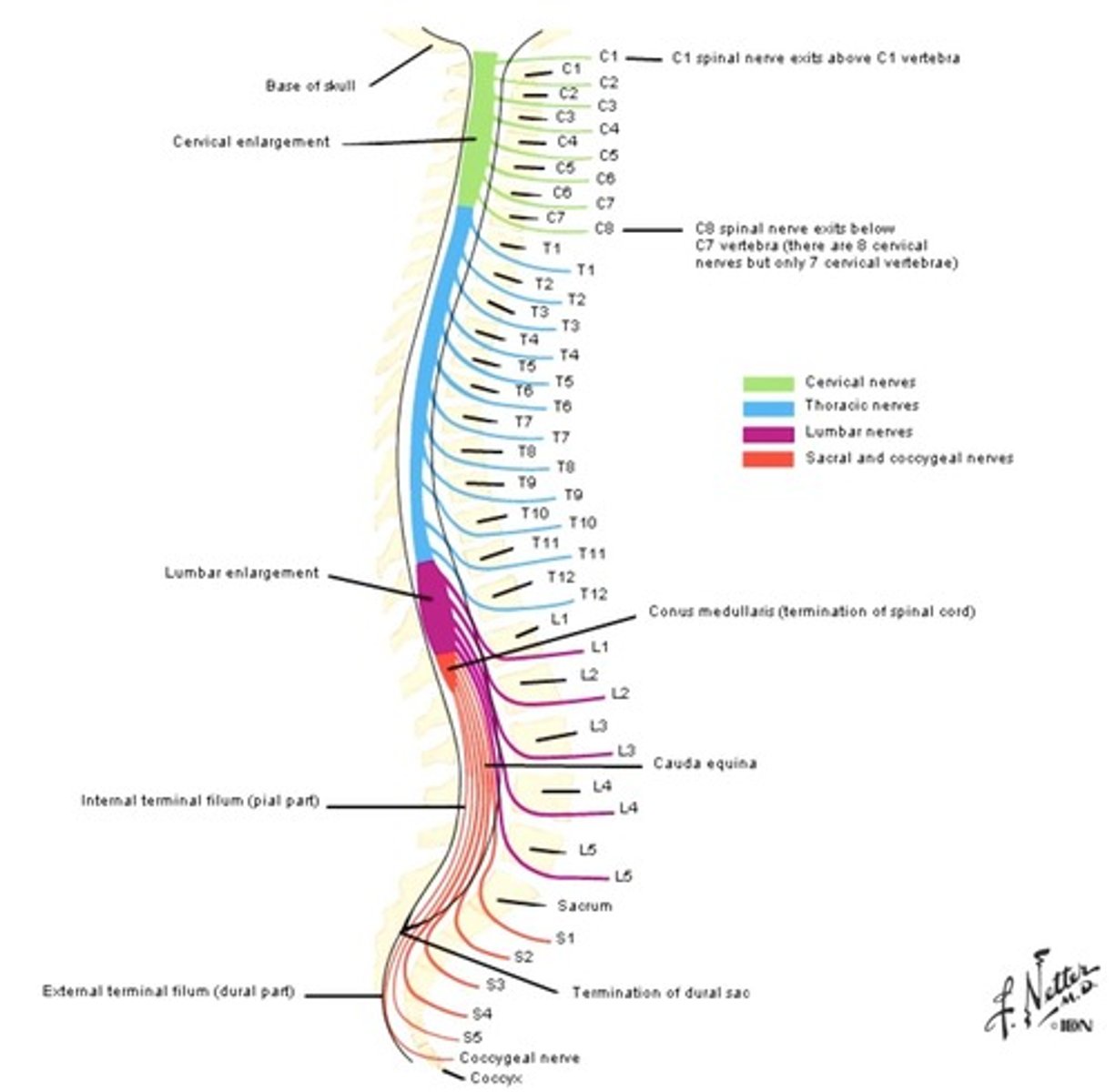
How many pairs of spinal nerves are there?
31 pairs
What is the function of the dorsal column-medial lemniscus pathway?
Carries sensations of touch, pressure, vibration, and conscious proprioception.
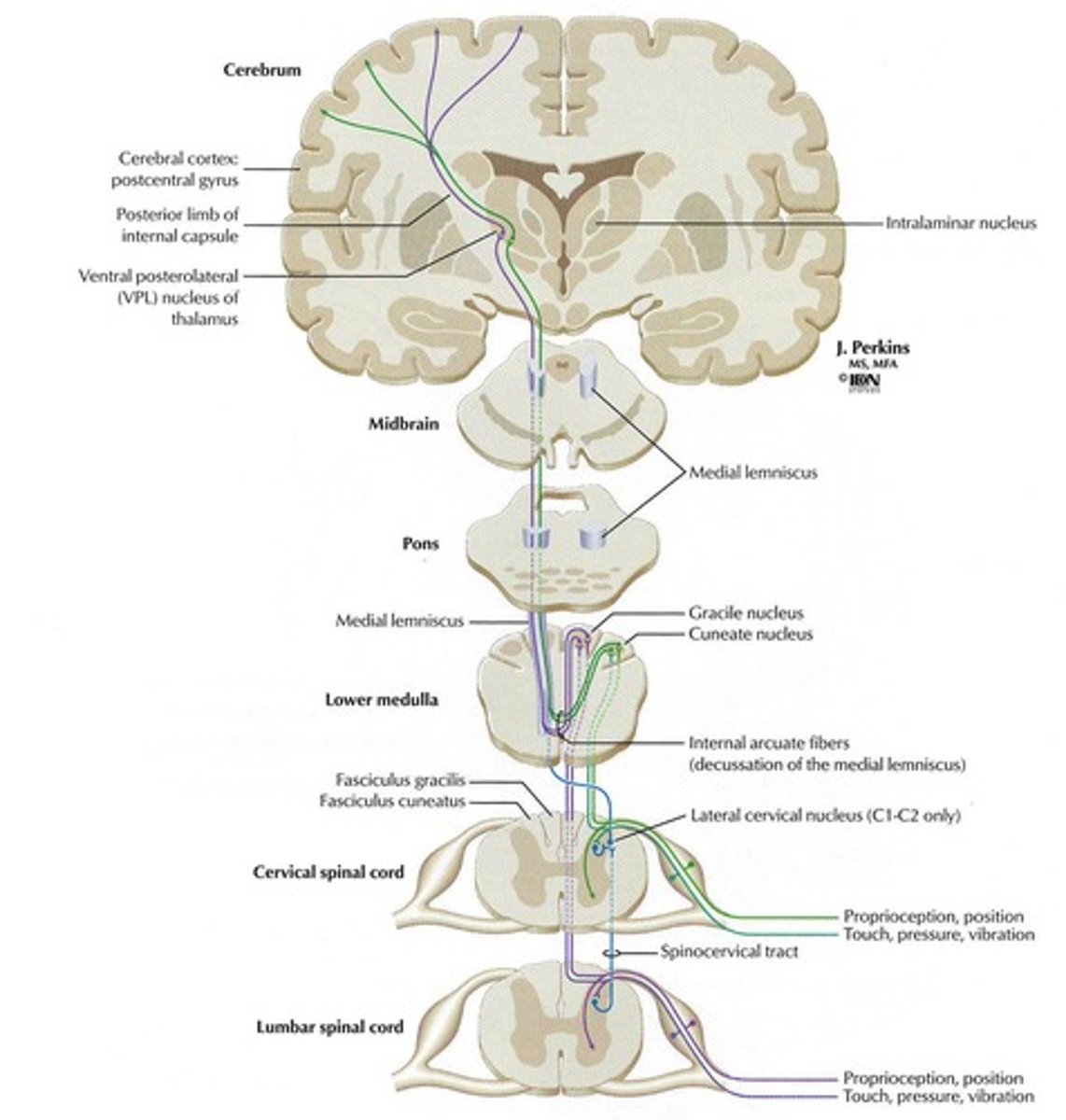
What are the two tracts in the dorsal column-medial lemniscus pathway?
Fasciculus gracilis (lower limb and trunk) and Fasciculus cuneatus (upper limb and trunk)
Where does the central process of the 1st neuron in the dorsal column pathway enter?
The dorsal root of the spinal segment.
What happens to the axon of the 2nd neuron in the dorsal column pathway after it synapses?
It crosses the midline and ascends as the medial lemniscus to the thalamus.
What is the final destination of the 3rd neuron in the dorsal column pathway?
The primary somatosensory cortex in the postcentral gyrus of the parietal lobe.
What is the structure of the sensory pathway that carries touch and proprioception?
A 3 neuron chain with a crossed pathway, thalamic relay in VPL, and termination in the postcentral gyrus (layer IV).
What types of sensations does the dorsal column-medial lemniscus pathway carry?
It carries three types of touch and conscious proprioception.
What are the fasciculus gracilis and fasciculus cuneatus responsible for?
Fasciculus gracilis carries input from spinal nerves T6 and below, while fasciculus cuneatus carries input from T5 and above.
What is the function of the Lateral Spinothalamic Tract?
It carries pain and temperature sensations.
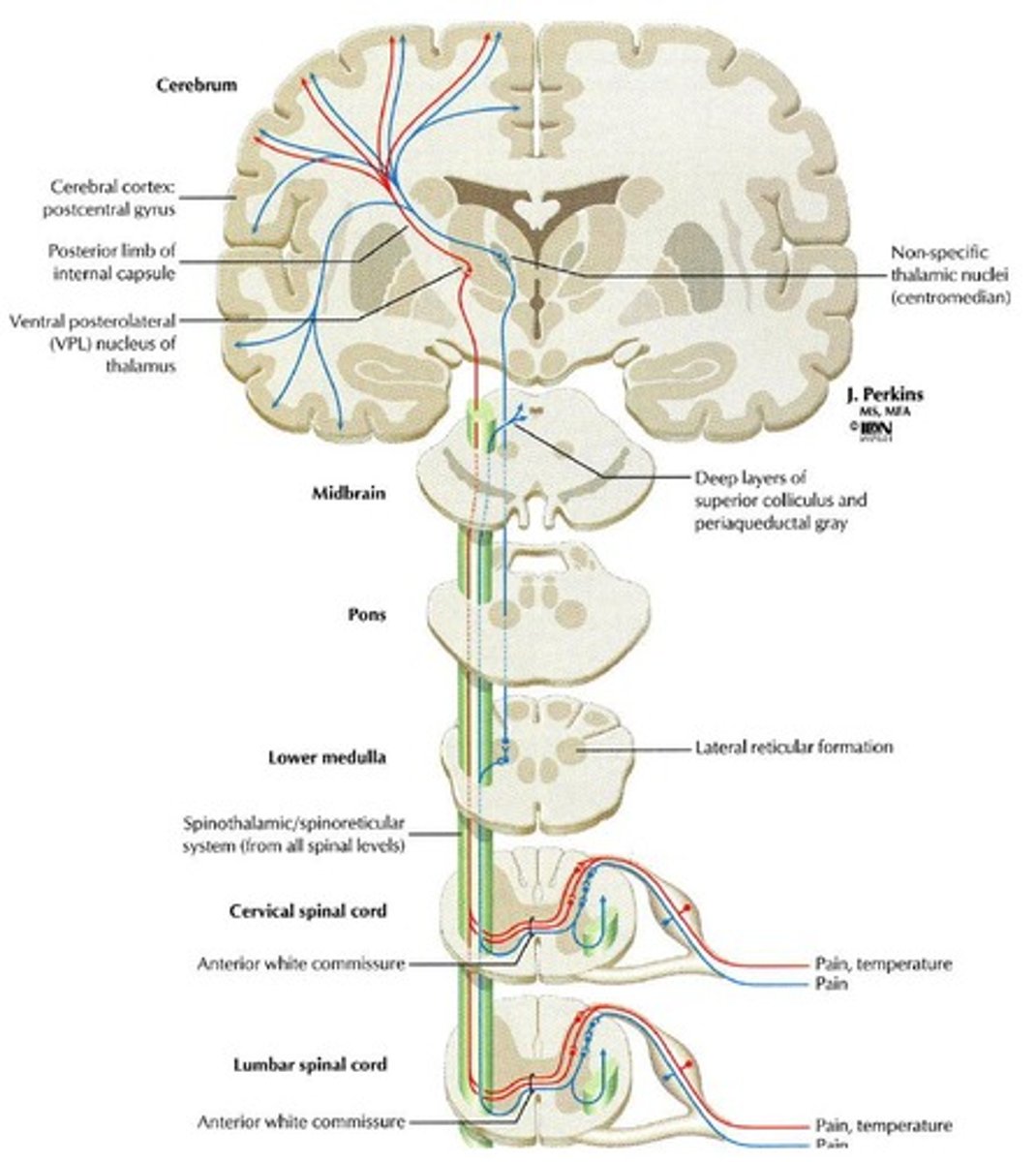
Describe the pathway of the Lateral Spinothalamic Tract.
A 3 neuron chain where the 10 neuron is in the dorsal root ganglion, the 20 neuron is in the dorsal horn, and the 30 neuron is in the thalamus (VPL).
Where does the axon of the 20 neuron cross in the Lateral Spinothalamic Tract?
It crosses in the anterior white commissure of the spinal cord.
What is the Dorsal Spinocerebellar Tract responsible for?
It carries unconscious proprioception.
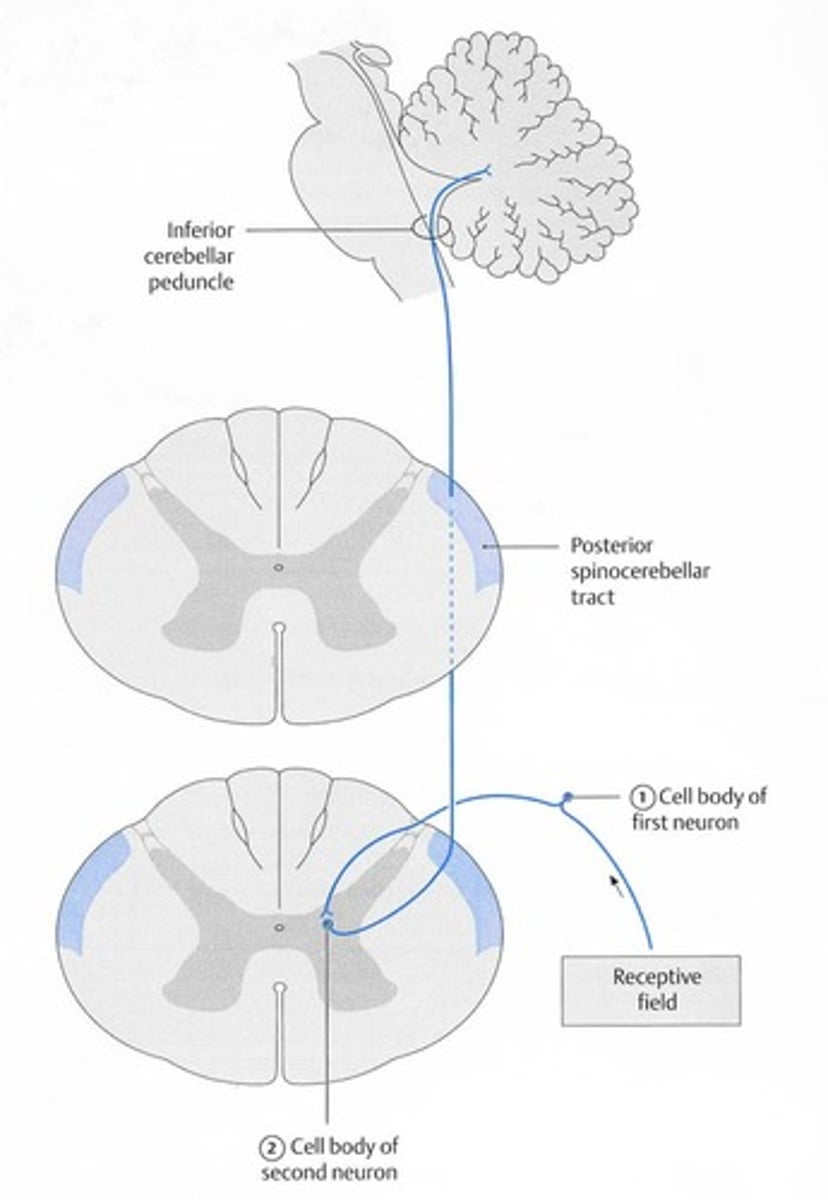
What is the structure of the Dorsal Spinocerebellar Tract?
A 2 neuron chain with an uncrossed pathway that does not reach the cerebral cortex.
What is the origin of the axons in the Lateral Corticospinal Tract?
Axons originate from neurons in the precentral gyrus.
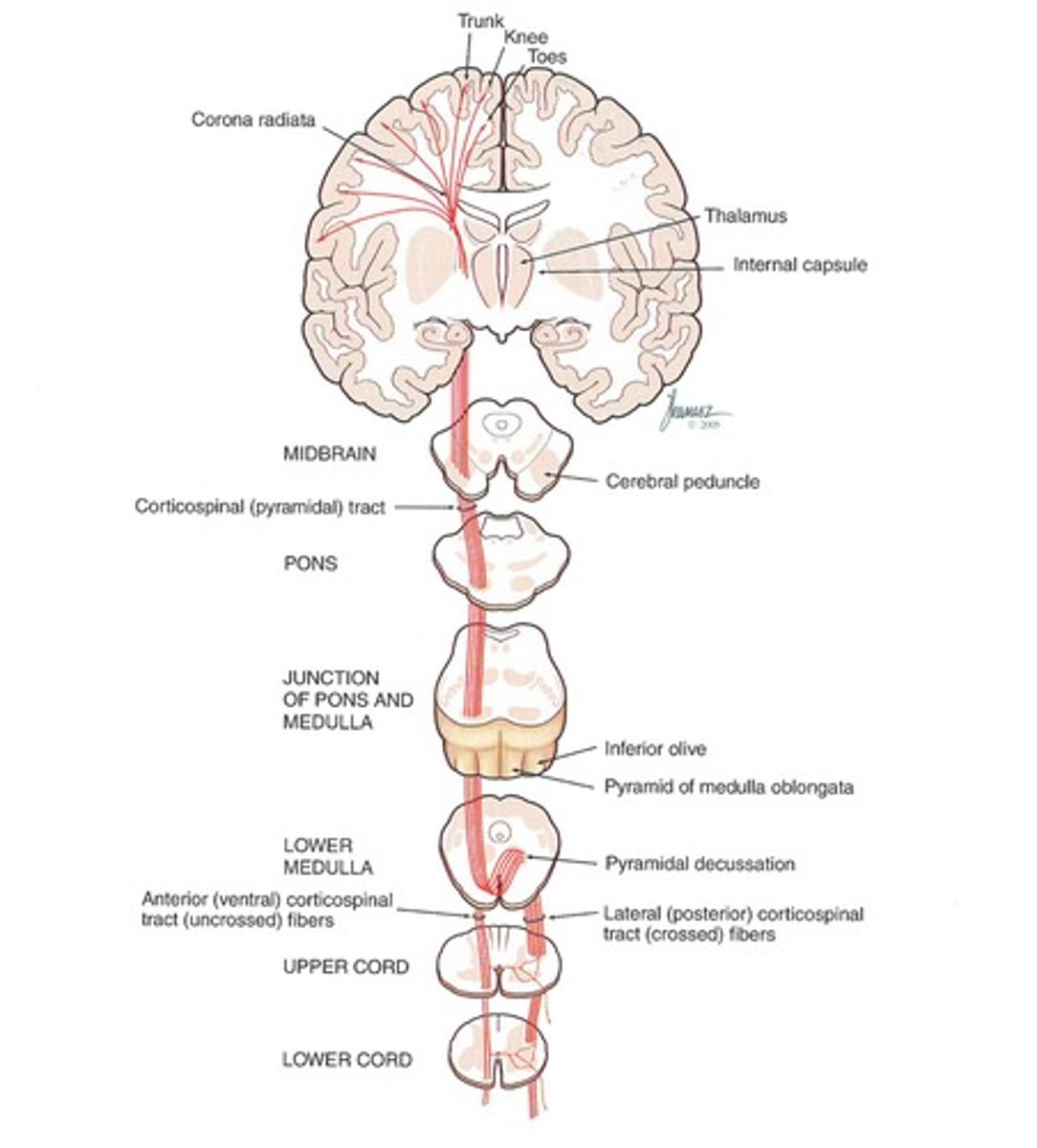
What happens to 90% of the axons in the Lateral Corticospinal Tract?
They cross over at the pyramidal decussation and descend in the lateral white matter of the spinal cord.
What is the role of the Rubrospinal Tract?
It innervates motor neurons in the ventral horn of the spinal cord and originates from the red nucleus.

What is the anatomical location of the thalamus?
It is located in the midline of the forebrain above the hypothalamus.
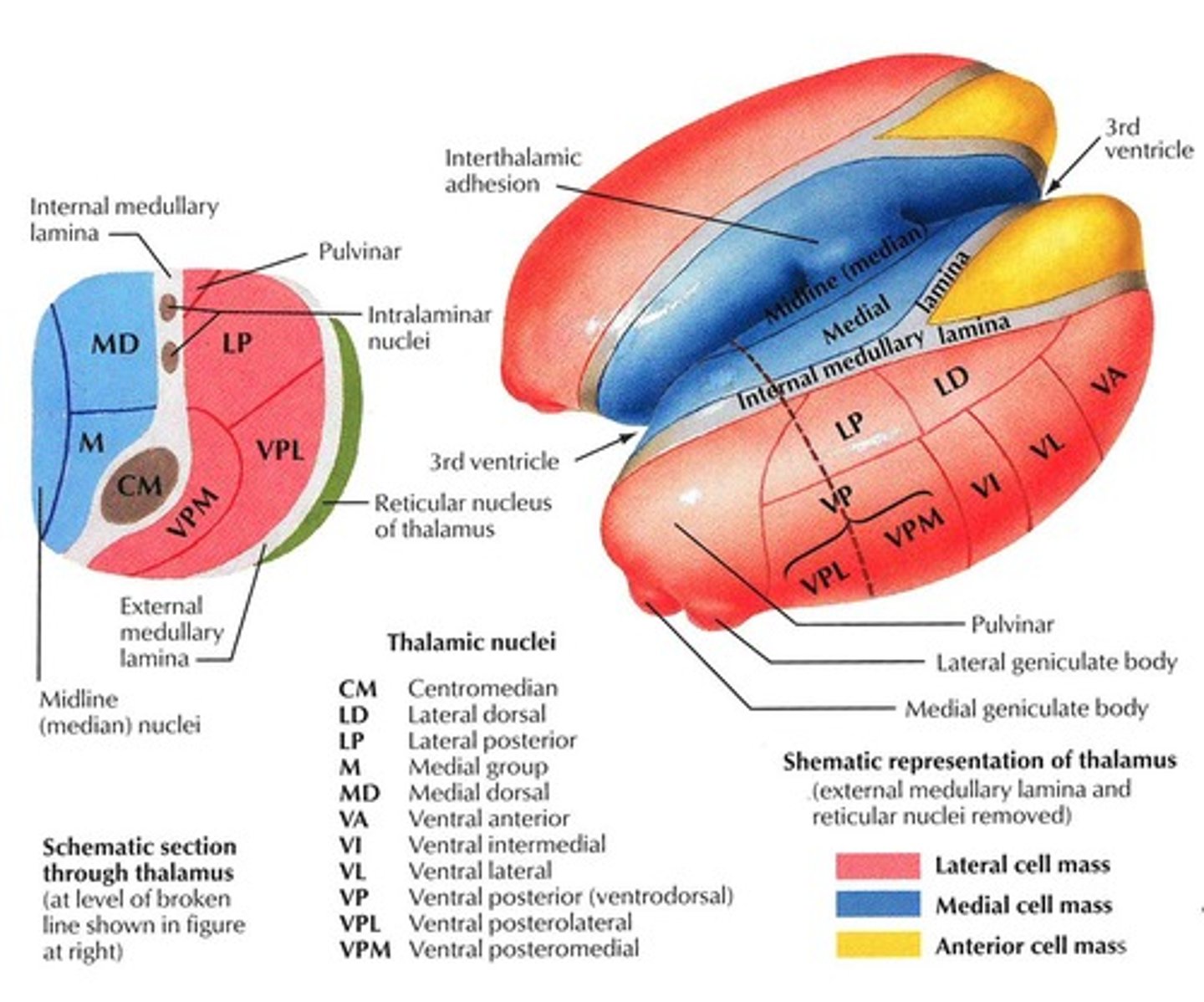
What are the primary functions of the thalamus?
Relaying sensory information to the cortex (except olfaction), regulating consciousness, sleep, and processing motor and limbic stimuli.
How is the thalamus divided anatomically?
The internal medullary lamina divides it into anterior, medial, and lateral zones.
What are the specific relay nuclei in the thalamus?
Ventral Anterior (VA), Ventral Lateral (VL), Ventral Posterior Lateral (VPL), Ventral Posterior Medial (VPM), Medial Geniculate Nucleus (MGN), and Lateral Geniculate Nucleus (LGN).
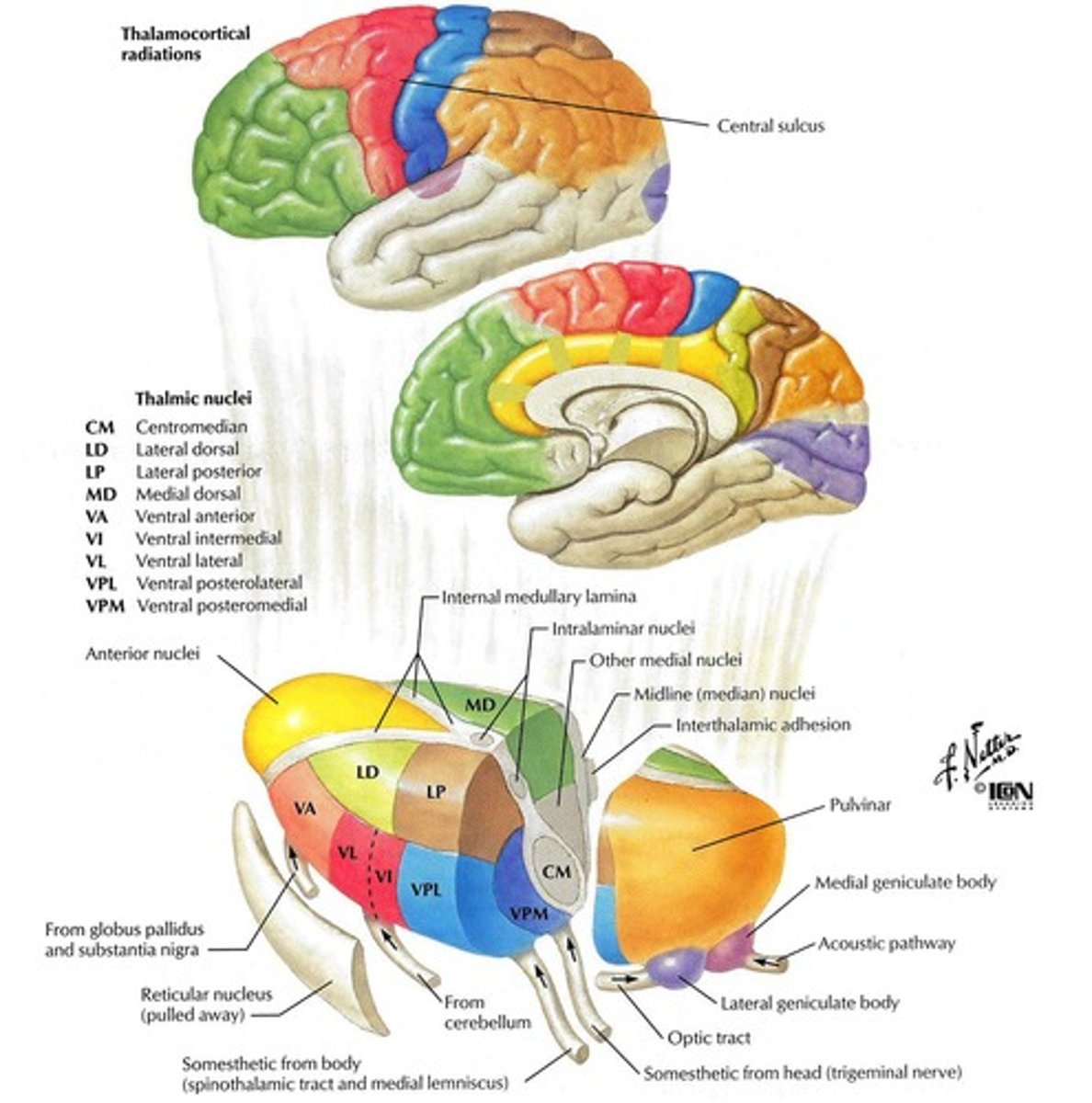
What type of sensation does the Ventral Posterior Lateral (VPL) nucleus process?
Body sensation.
What type of sensation does the Ventral Posterior Medial (VPM) nucleus process?
Face sensation.
What is the function of the Medial Geniculate Nucleus (MGN)?
It processes auditory information.
What is the function of the Lateral Geniculate Nucleus (LGN)?
It processes visual information.
What is the role of the Centromedian (CM) nucleus in the thalamus?
It is involved in motor processing.